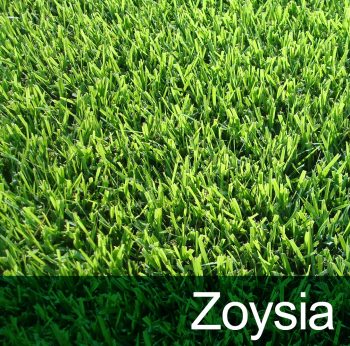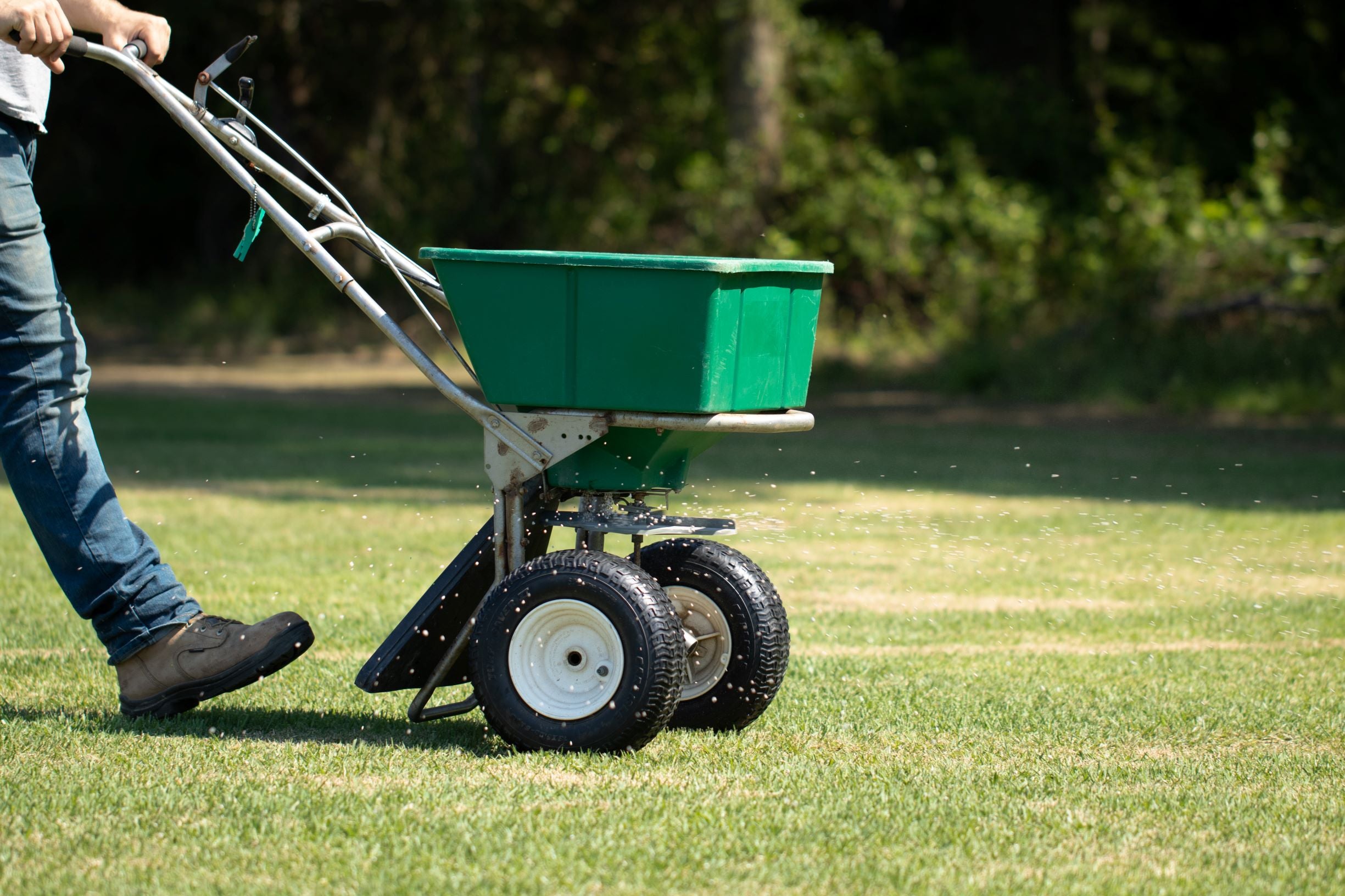To fertilize Zoysia, apply a slow-release nitrogen fertilizer according to the manufacturer’s instructions. Zoysia grass is a popular choice for lawns due to its dense, lush growth and ability to withstand heat and drought.
However, to keep it healthy and vibrant, it’s important to provide it with the proper nutrients. One way to do this is by fertilizing the grass with a slow-release nitrogen fertilizer. This type of fertilizer releases nutrients slowly over time, providing a steady supply of the essential elements Zoysia needs to thrive.

Credit: landscapingfrisco.com
By following the manufacturer’s instructions and applying the fertilizer at the right time and in the right amount, you can help your Zoysia lawn reach its full potential. Here, we will discuss the steps to fertilize Zoysia and ensure a healthy, beautiful lawn.
Understanding Zoysia Grass And Its Nutritional Requirements
Understanding Zoysia Grass and its nutritional requirements is essential to ensuring a healthy and vibrant lawn. Zoysia grass is known for its durability and ability to withstand various climates, making it a popular choice for homeowners. However, it requires specific care, including proper fertilization, to thrive.
When it comes to fertilizing Zoysia grass, it is important to recognize the basics of this type of grass. Zoysia grass is known for its dense and slow-growing nature, which means it requires less frequent fertilization compared to other grass types. However, when properly fertilized, it can flourish and create a beautiful landscape.
The importance of proper fertilization cannot be understated. Fertilizing Zoysia grass provides the necessary nutrients it needs to maintain its health and vitality. It promotes growth, enhances its vibrant green color, and improves its resistance to pests and diseases.
To ensure the right balance of nutrients, it is crucial to choose a high-quality fertilizer specifically formulated for Zoysia grass. This will provide the necessary nutrients, such as nitrogen, phosphorus, and potassium, in the right proportions. Following the recommended application rates and timings are also vital to avoid over-fertilization or under-fertilization.
In summary, understanding the basics of Zoysia grass and the importance of proper fertilization is crucial for maintaining a lush and healthy lawn. By providing the right nutrients in the right amounts, you can ensure your Zoysia grass thrives and becomes the envy of the neighborhood!
How to Fertilize Zoysia : Step by Step Guide
Determining The Right Fertilizer For Zoysia Grass
When fertilizing Zoysia grass, it’s crucial to determine the right fertilizer based on soil conditions, nutrient deficiencies, and the ideal fertilizer formulation. Examining the soil conditions is the first step in this process. Conducting a soil test helps identify the current nutrient levels and pH balance of the soil, allowing you to make informed decisions about the fertilizer needed for optimal growth.
Assessing nutrient deficiencies is equally important. Look for signs such as yellowing leaves, slow growth, or weak root systems. Identifying the specific nutrients lacking enables you to select a fertilizer that addresses those deficiencies.
Once you have a clear understanding of the soil conditions and nutrient deficiencies, you can move on to selecting the ideal fertilizer formulation. Consider the nutrient ratios and the recommended application rates for Zoysia grass. Choosing a fertilizer that aligns with these requirements ensures that the grass receives the necessary nourishment for healthy growth.
| Soil Conditions | Nutrient Deficiencies | Ideal Fertilizer Formulation |
|---|---|---|
| Conduct a soil test to determine nutrient levels and pH balance. | Look for signs of yellowing leaves, slow growth, or weak root systems. | Consider the nutrient ratios and application rates suitable for Zoysia grass. |
Preparing The Lawn For Fertilization
Seasonal Considerations
Fertilizing your Zoysia lawn requires careful consideration of the seasons. **Testing the soil pH** is an essential step before fertilization. Conduct a soil test to determine the pH and nutrient levels of your lawn. This information will help you choose the appropriate fertilizer and application timing.
In addition to soil pH, you need to address **weeds and pests** that may hinder the effectiveness of fertilization. **Dealing with weeds** early on will prevent them from competing with your Zoysia grass. Regularly inspect your lawn and take necessary action to control any weed growth. Likewise, **pests** can cause damage to your lawn, so keep an eye out for signs of infestation and take appropriate measures.
Applying Fertilizer To Zoysia Grass
Applying fertilizer to Zoysia grass is an essential step in ensuring its healthy growth and vibrant green appearance. Timing and frequency play a crucial role in effectively fertilizing Zoysia. The ideal time to apply fertilizer is in the early spring when the grass starts actively growing. This helps to provide the necessary nutrients for healthy root development.
When it comes to frequency, it is recommended to fertilize Zoysia grass once every six to eight weeks during the growing season. However, it is important to avoid over-fertilization, as it can lead to excessive growth and weaken the grass.
When applying the fertilizer, it is crucial to follow the correct application technique. Using a spreader or sprayer can ensure even distribution of the fertilizer across the lawn. It is recommended to apply the fertilizer in a crisscross pattern to prevent uneven feeding and potential burning of the grass.
Overall, fertilizing Zoysia grass requires careful attention to timing, frequency, and application technique. By following these guidelines, you can promote healthy growth and maintain a lush, vibrant lawn.
Factors to Consider for Optimal Zoysia Grass Health
Zoysia grass requires adequate nutrient uptake for optimal health and growth. When fertilizing, it’s important to consider the specific nutrient requirements of Zoysia. **Key nutrients** such as nitrogen, phosphorus, and potassium are crucial for its well-being. **Applying a balanced fertilizer** with the right **nutrient ratios** is important to promote healthy green growth and a dense turf. Understanding the **nutrient composition** of the fertilizer and the **specific needs** of Zoysia grass is essential for success.
Zoysia grass health is also influenced by proper watering practices. **Deep and infrequent watering** encourages deep root growth and helps the grass develop a **stronger drought tolerance**. Regularly watering the lawn **without overwatering** will support optimum Zoysia health.
In addition to fertilization and watering, **mowing and proper maintenance** play a vital role in maintaining Zoysia grass health. **Regular mowing** at the **correct height** helps to prevent scalping and promote dense turf growth. **Removing thatch** regularly and **aerating the soil** allows for better nutrient absorption and root development.
In summary, optimal Zoysia grass health depends on several factors. Understanding nutrient uptake is crucial, and applying a balanced fertilizer with the right nutrient ratios is essential. Additionally, proper watering practices, including deep and infrequent watering, support a strong and drought-tolerant lawn. Mowing and maintenance, such as regular mowing at the correct height and removing thatch, promote dense turf growth. By considering these factors, you can ensure the health and vitality of your Zoysia grass.
Troubleshooting Common Fertilization Issues
|
Zoysia grass requires proper fertilization to maintain its health and appearance. However, sometimes common issues can arise during the fertilization process. It’s important to recognize nutrient imbalances, so you can adjust your fertilization routine accordingly. Signs of over-fertilization include excessive plant growth, lush green color, and thatch build-up. These signs indicate an imbalance in nutrient ratios, particularly an excess of nitrogen. To address this issue, reduce the frequency and amount of fertilizer you apply, and opt for a slow-release fertilizer instead. On the other hand, under-fertilization concerns can be identified by yellowing or stunted growth of the grass. This indicates a lack of essential nutrients. To address this issue, increase the frequency of your fertilization schedule and use a balanced fertilizer that contains the necessary nutrients for Zoysia grass. |
Best Practices For Long-Term Zoysia Grass Fertilization
For effective long-term fertilization of Zoysia grass, it is essential to create a well-structured fertilization schedule. This schedule should take into account the specific needs of Zoysia grass and the local climate conditions. Regular monitoring of the lawn’s response to the fertilizer is also crucial.
When creating a fertilization schedule, it is important to consider the grass’s growth patterns. Zoysia grass tends to have a slow growth rate, so it requires lower amounts of nitrogen compared to other grass types. **Applying too much nitrogen can result in excessive thatch accumulation and reduced overall health of the grass**.
To monitor the lawn’s response, regularly inspect the grass for signs of yellowing or browning, which may indicate nutrient deficiencies or excesses. Adjust the fertilizer application as needed based on these observations. **It’s crucial to strike a balance between providing adequate nutrients and avoiding over-fertilization**.
| Key Points: |
|---|
| – Create a well-structured fertilization schedule for Zoysia grass |
| – Consider Zoysia grass’s slow growth rate and lower nitrogen requirements |
| – Monitor the lawn’s response for nutrient deficiencies or excesses |
| – Adjust fertilizer application as needed |
| – Maintain a balance between providing adequate nutrients and avoiding over-fertilization |
Frequently Asked Questions On How To Fertilize Zoysia
What’S The Best Fertilizer For Zoysia?
The best fertilizer for Zoysia is one that is specifically formulated for this type of grass.
When Should I Fertilize My Zoysia Lawn?
Fertilize your Zoysia lawn during late spring or early summer for optimal growth and health.
Should Zoysia Grass Be Fertilized?
Yes, Zoysia grass should be fertilized to promote healthy growth and maintain its lush appearance.
How Do You Thicken Zoysia Grass?
To thicken Zoysia grass, follow these steps: 1. Mow the grass regularly to remove excessive growth and promote spreading. 2. Aerate the soil to improve air and water circulation, allowing the grass to grow thicker. 3. Overseed bare patches with Zoysia grass seeds to fill in gaps and increase density.
4. Apply a balanced fertilizer according to the recommended schedule to provide essential nutrients for growth. Remember: Regular maintenance, aeration, overseeding, and proper fertilization can help improve the thickness of Zoysia grass.
Conclusion
Fertilizing Zoysia grass is an essential step in maintaining a healthy, vibrant lawn. By understanding the specific needs of Zoysia and following a proper fertilization schedule, you can ensure that your grass receives the nutrients it requires to thrive. Start by testing your soil and adjusting pH levels if necessary.
Then, choose a high-quality, slow-release fertilizer that is specifically formulated for Zoysia grass. Apply the fertilizer evenly and follow the recommended application rates. Remember to water your lawn after fertilization to help the nutrients penetrate the soil. Regularly monitoring your lawn’s condition and adjusting your fertilization plan as needed will help you achieve the best results.
With proper fertilization, your Zoysia grass will grow denser, greener, and more resistant to diseases and pests. So don’t wait, give your Zoysia lawn the care it deserves and enjoy a beautiful and lush green lawn all year round.

